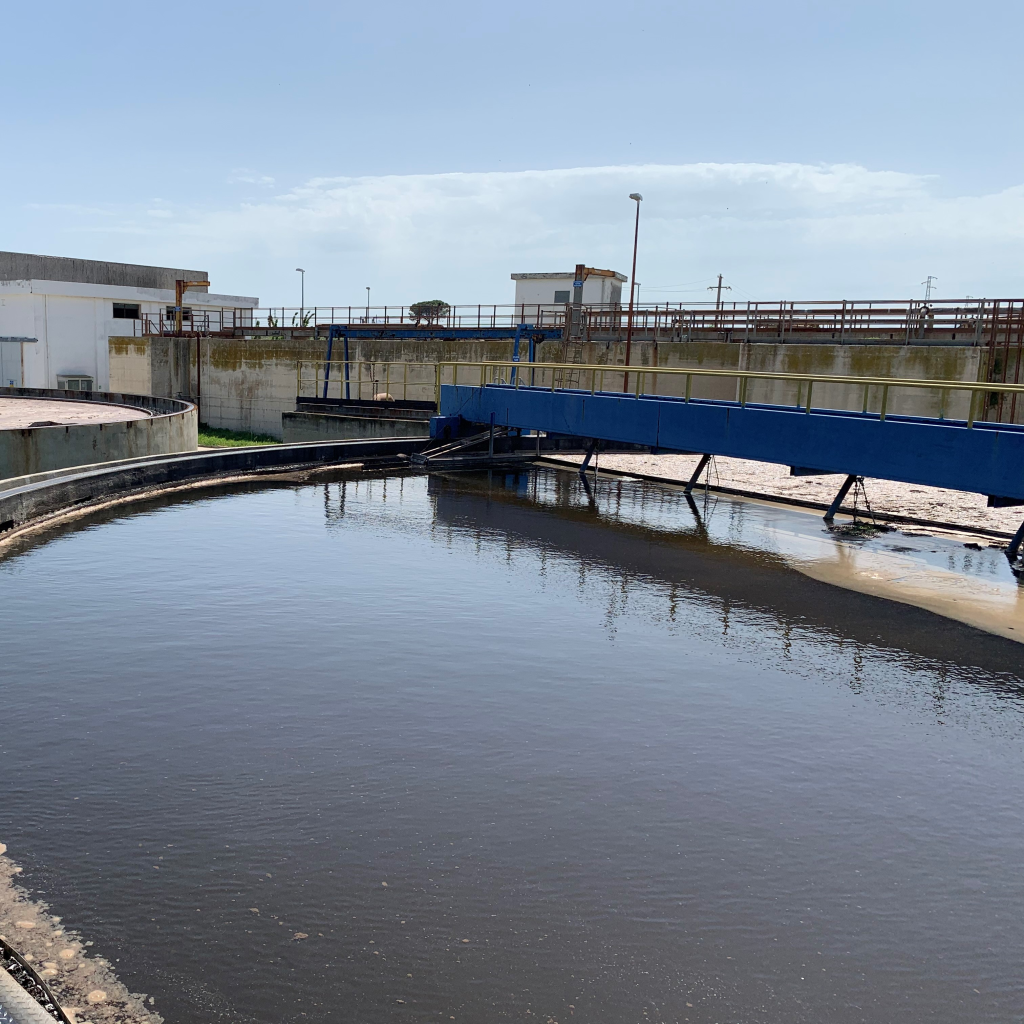



Two-component epoxy phenolic resin, applicable by spray, roller or spatula, for the coating and waterproof protection of structures subject to strong chemical aggression.
Property:
Industrial floors in concrete. Waste water purification tanks and related technical rooms. Tanks, ducts and food containers. Digesters and plants for the production of biogas. Coating of pipes and liquid containment tanks. Water treatment, purification and distribution plants. Containers of acidic and basic substances. Stables, milking rooms, veterinary rooms, slaughterhouses. Analysis laboratories, warehouses, raw material storage areas and production areas. Containment tanks for accidental spills of petroleum products, chemicals and food products. Protective coating of floors and walls of food, dairy, wine, breweries, distilleries, oil mills, oil mills.
The substrate on which the resinous system is to be placed must be suitable for withstanding the stresses resulting from the intended use, such as for example static or dynamic loads, impacts, thermo-hygrometric expansion, vibrations, etc. As regards the characteristics of the substrate (maximum humidity, cohesion, resistance class, flatness, etc.) and the preparation of the surface that will receive the resinous system, all the provisions set out in chapter 5 of the UNI 10966 standard (“RESINOUS SYSTEMS FOR SURFACES HORIZONTAL AND VERTICAL – INSTRUCTIONS FOR DESIGN AND APPLICATION").
Evaluate the most convenient type of mechanical preparation (shot peening, sandblasting, pressure washing, etc.). Follow the instructions for the different types of support listed below.
Concrete
The surfaces to be coated must be stable, clean and free from substances that can affect the adhesion of the coating such as dirt, grease, oil, traces of coatings and surface treatments, etc. Any weak or flaking parts must be removed before applying the product by mechanical sanding with diamond discs and dust extraction. The tensile strength must not be less than 1.5 N/mm².
Cracks and fissures
In case of static cracks, use a mortar from the REPAR line for sealing. The sealing of dynamic cracks or greater than > 4-5 mm must be assessed on site. Generally they can be grouted using elastomeric materials or worked as movement joints.
Localized grouting and repairs
Any holes, deficiencies, repairs of portions of concrete can be carried out by applying Floor Tenax high-performance mortar.
Support humidity control
Before laying resinous systems and coverings, always check the residual humidity content. Check for the presence of residual humidity using the plastic sheet method according to the ASTM D 4263 standard: fix a heavy polyethylene sheet of at least 45x45 cm in size to the support with an adhesive tape. 24 hours after laying, lift the sheet and check for signs of humidity. If testing with a carbide hygrometer, the moisture content of the substrate should be < 4% by weight.
Wet support
In case of residual humidity, apply two or more coats of Syntech Pavidamp three-component epoxy primer. All cracks in the substrate must be treated and sealed before applying the three-component primer.
Fiberglass
The surfaces to be coated must be stable, clean and free from substances such as dirt, grease, oil, etc. which can affect the adhesion of the coating. Sand the surface by mechanical sanding with diamond discs and dust extraction. We recommend washing the surfaces and waiting for them to dry completely before applying the finish
Steel
Any welding residues must be removed and the joints ground. Blast clean to Sa 2½ according to EN ISO 12944-4. The surfaces to be coated must be free from dirt, oils, greases and impurities. Average surface roughness degree RZ ≥ _50.
The surfaces must also be free from discontinuities, and eventually leveled and regularized with products from the FLOOR line or the REPAR line. Apply approximately 150 to 200 g/m2 of Syntech Primer EP-W by roller, brush or spray to consolidate the substrate and facilitate adhesion of the subsequent coating. Apply Syntech Acid Resistant when the primer is completely dry and no later than 24 hours after applying it. In the event of the presence (even suspected) of humidity deriving from capillary rising from the substrate, it is recommended to first apply the Syntech Pavidamp epoxy resin for "wet substrates".
Tiled floors, or floors covered with pre-existing resin, must be subjected to mechanical roughening carried out with shot blasting, milling, bush-hammering, etc., until the total elimination of the waterproof crust and the opacification of the surfaces. Remove dust after abrasion.
Apply the appropriate primer according to the type of substrate as specified below:
Concrete
The application of Syntech Acid Resistant on cementitious substrates must always be preceded by the application of a coat of Syntech Primer EP-W anchoring epoxy primer. Wait 8-12 hours before applying the coating
Resin coatings
The application of Syntech Acid Resistant on resinous and multilayer systems must always be preceded by sanding the entire surface in order to promote and guarantee optimal adhesion of the product to the substrate.
Steel
The application of Syntech Acid Resistant on steel substrates must always be preceded by the application of a coat of epoxy-polyamide primer in the "surface tolerant" solvent phase Syntech Poliurea Primer-Epoxy Metal. Wait 24 hours before applying the coating
Application temperature (air and substrate)
Minimum +10°C _ Maximum + 35°C . The substrate must have a temperature at least +3°C higher than the dew point to reduce the risk of condensation or whitening of the finish.
Environmental relative humidity
Minimum 35% _ Maximum 80 %
Mixing
Combine the two components in the indicated mixing ratio. Add component B (hardener) to component A (base) and mix thoroughly until the product is completely homogenised.
It is advisable to start mixing briefly with an electric drill at low rpm and then intensify the stirring up to a maximum of 300-400 rpm
Application
The product can be applied by spray, trowel or roller. On the suitably prepared substrate, apply the product in two or more coats, respecting the indicated consumption and overcoating times. It is advisable to prepare a quantity of product not exceeding that which can be applied during the useful life of the material. High temperatures accelerate hardening and reduce the usage time of the prepared material







Dry residue
Heat resistance
Hardness
Shore A ASTM D2240
Permeability to CO2
EN 1062/6
Longitudinal elongation at break
ISO 868
Physical / Mechanical Resistance
Capillary absorption
EN 1062/3
Complete hardening at 20°C
a 20°C
Adhesion by direct traction
su acciaio EN 12188
Resistance to abrasion
H17 / 1000 giri / 1000g EN ISO 5470/1
Chemical resistance
Permeability to water vapor
EN ISO 7783-1
Touch hardening at 20°C
a 20°C
Concrete adhesion (direct traction)
EN 1542
Time before second coat at 20°C
a 20°C
As a primer: 0.20 - 0.25 kg of Syntech Acid Resistant for each square meter of surface to be primed.
As a coating: 0.40 kg of Syntech Acid Resistant for each square meter of surface to be coated.